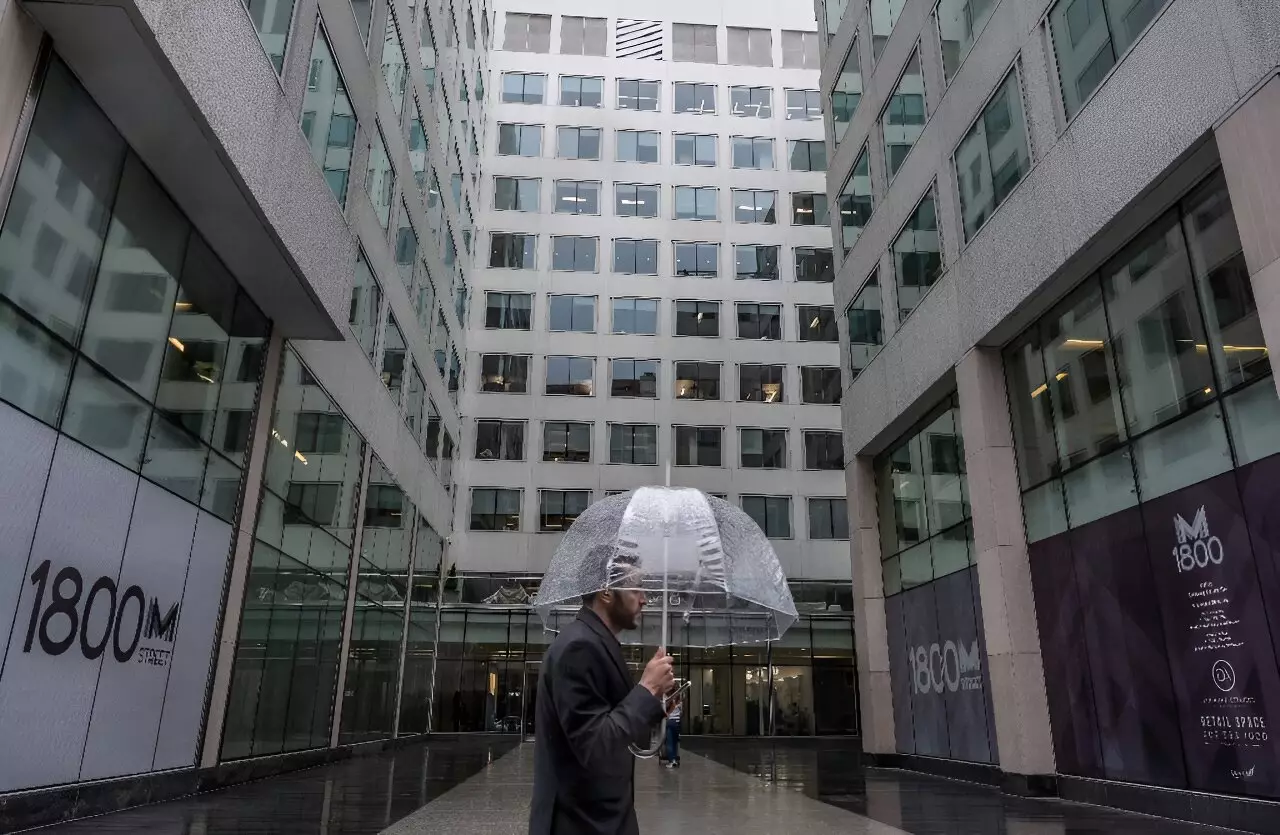The rise of remote work in the United States has led to a significant shift in work patterns, resulting in many office buildings sitting empty. This has caused a cause for concern among property owners, as the value of these buildings falls and they risk facing losses on property loans. According to US Federal Reserve Chair Jerome Powell, there is a looming risk of bank failures, particularly for smaller banks that are heavily invested in commercial real estate. This has become more apparent in cities like San Francisco, Washington, and New York, where office occupancy rates have decreased by half since the onset of the pandemic.
Office vacancy rates across the country have risen from 9.5 percent in 2019 to 13.5 percent in 2023. Credit company Fitch Ratings has predicted that these rates could potentially reach 16.6 percent by the end of the following year. Powell highlighted the underpopulation of downtown office districts in many cities, emphasizing the impact of remote work on the commercial real estate sector. This shift has caused a third of the commercial real estate sector’s value to decrease, leading to potential wider implications for the industry.
With $737 billion in office property mortgages, around $206 billion are set to mature this year. However, this comes at a time when interest rates are at their highest in over 20 years. This poses a significant challenge for property owners who need to refinance their loans in areas where vacancy rates are high and property valuations are lower. Commercial loans in the United States typically need to be renegotiated every three to five years, creating a potential chain reaction of defaults and capital stress for banks exposed to the commercial real estate sector.
Smaller banks, retirement funds, insurance companies, and other financial institutions could face substantial losses due to the impact of remote work on commercial real estate. While larger establishments may be able to absorb some of these losses, smaller banks are at a higher risk of facing financial difficulties. According to EY chief economist Gregory Daco, the risk of default among borrowers could lead to a domino effect, affecting the entire financial system. Additionally, commercial buildings in the portfolios of retirement funds or insurance companies could face devaluation, further exacerbating the situation.
National Economic Advisor Lael Brainard acknowledged the stress on the financial system due to changes in commercial real estate usage patterns. While the Federal Reserve is in dialogue with banks that have high concentrations in office and retail real estate, the potential for losses remains a significant concern. Oxford Economics Chief US Economist Ryan Sweet pointed out that if properties are sold for less than anticipated, it could trigger a reassessment of potential losses and credit loss provisions by banks. This was evident in the case of New York Community Bancorp, which reported a $185 million provision for the last quarter due to deterioration in its real estate loan portfolio.
The impact of remote work on commercial real estate in the United States has far-reaching consequences for property owners, financial institutions, and the overall economy. As the trend towards remote work continues to grow, it is essential for stakeholders to adapt to the changing landscape and mitigate potential risks associated with vacant office buildings and declining property values. The collaboration between regulatory bodies, financial institutions, and property owners will be crucial in addressing the challenges posed by the evolving commercial real estate market.


Leave a Reply